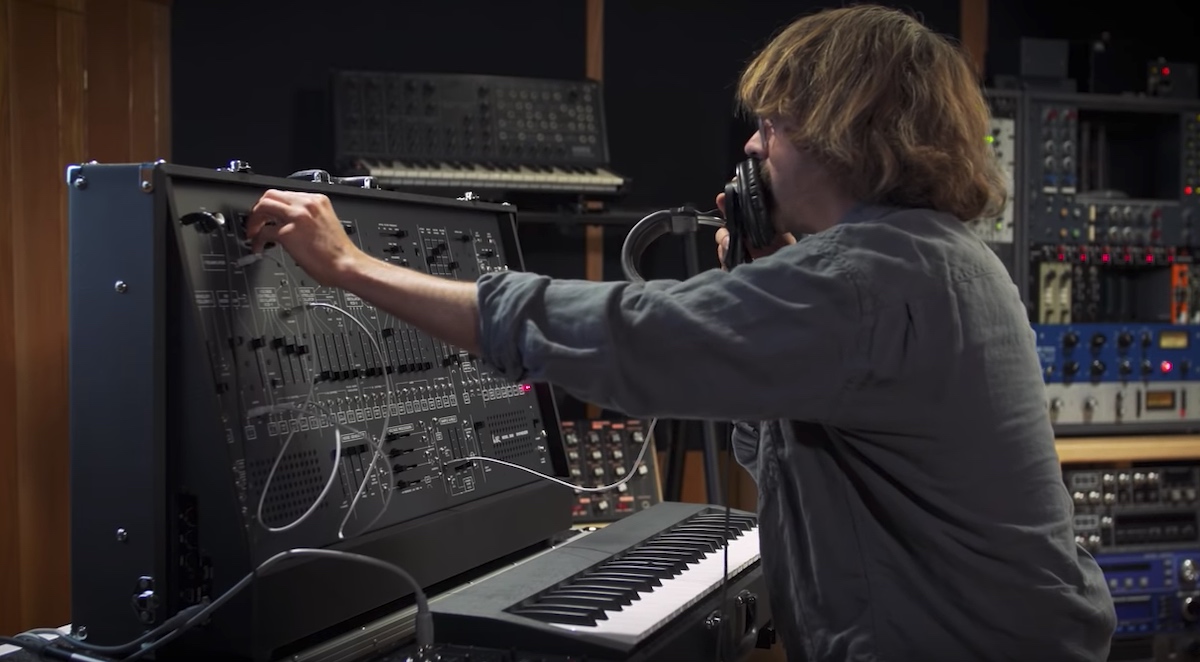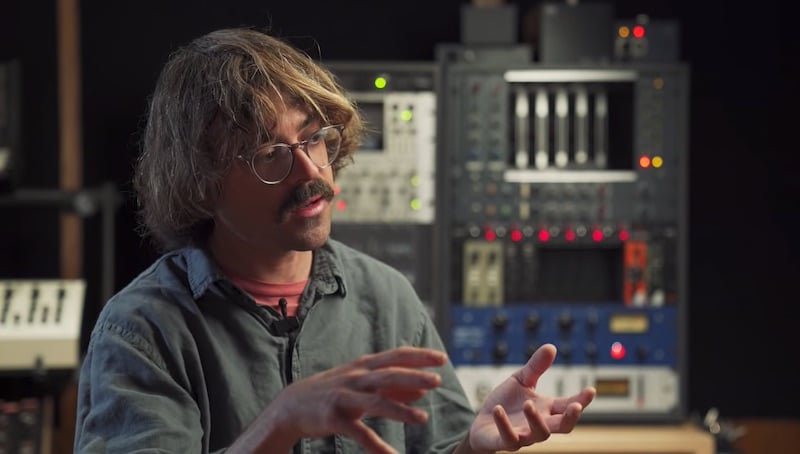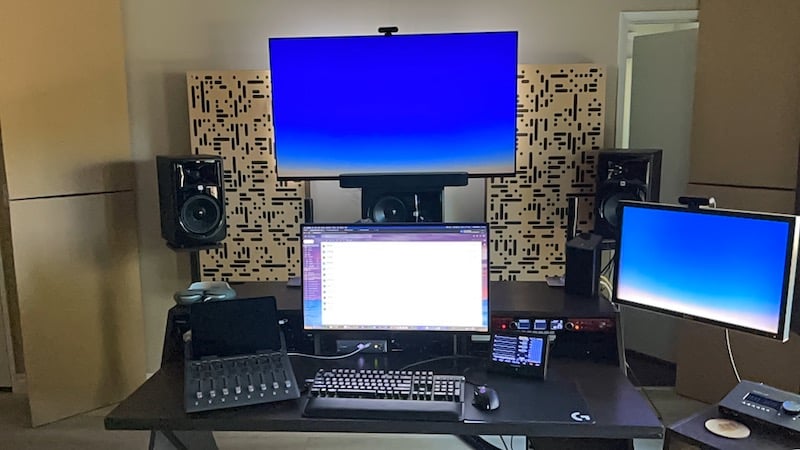The "How I Work" series (inspired by Lifehacker) asks CORE users what inspires them and what tools and routines help them get work done from day to day.
We recently had the chance to catch up with sound artist Robby Stambler whose credits include Star Wars: Episode IX - The Rise of Skywalker (additional sound design), Venom (sound designer), and The Cloverfield Paradox (supervising sound editor). Learn about his home studio setup, his experience working with JJ Abrams and other colleagues he finds inspiration from, and how he uses CORE in his work.
PSE: How did you get into the industry? What types of projects do you typically work on?
Robby Stambler: My first job was in a movie theater at concessions. By my senior year of high school I worked as the projectionist for all 16 screens! A few years later I found myself as a freelance projectionist for AFI fest and LA film fest with a speciality in running the shorts programs (lots of change-overs, format switches, etc.) Meanwhile I was trying to maneuver into picture editorial for features - I scored a few gigs as an editorial PA and eventually wound up in a post production coordinator position at Bad Robot where I met JJ Abrams. Graduating to an assistant editor role at Bad Robot provided opportunities to cut temp sound in the Avid - which led me down the path of becoming a sound designer and supervisor on feature films, television, commercials, streaming series, and documentaries.
"I am fascinated by the psychology of sound and its ability to affect us emotionally. Reverse engineer your own life experiences and apply when possible."

What was your favorite experience working on a project so far?
Working on the JJ Abrams films and being in the trenches with his collaborators, the production designers, picture editors, VFX supervisors, sound supervisors, mixers - witnessing the creative process across these departments was a masterclass.
Working on fun franchises like Mission Impossible, Star Trek and Star Wars in addition to supervising the sound of 10 Cloverfield Lane and Overlord have been highlights for sure. My voice as an alien creature in Star Wars: Episode VII - The Force Awakens saying “Kojima” as an homage to Hideo Kojima, working with Cameron Crowe, finding mentors like Will Files and Chris Jenkins, working on French surrealistic comedies directed by Quentin Dupieux (Mr. Oizo).
"Listen to everything. Mentors are everything. Don’t be afraid to read the manual. Take chances whenever possible and appropriate. Don't be afraid to show your passion."
What was your most recent project?
The most recent thing to release is a documentary called Operation Varsity Blues: The College Admission Scandal - I did some work on the upcoming Venom film as well (Venom: Let There Be Carnage).
What is a typical day like for you?
I like getting up at first light and surfing before sitting down to work for the day – it helps my body and my mind to spend time outside of the studio environment. Get in the chair by 9am – as I am opening and closing sessions, I’m listening to music to engage my ears and emotions. Maybe I’ll watch a few minutes of a film I really admire to get my ears calibrated. Right now my collaborators are based in a different timezone, so I have the entire morning without any email, messages, or phone calls to distract. I’ll usually connect with my team in the early afternoon and then step out of the studio for a lunch break. I'll be back in the studio until about 8pm and then I walk away – I may continue to think about things into the night, but I try to make it a rule to not fatigue the ears and prioritize family time in the evening.
Where do you find inspiration for your sound design work?
First and foremost, I find inspiration in my own life experiences – how did a certain experience feel physically and what did it sound like? I am fascinated by the psychology of sound and its ability to affect us emotionally. Reverse engineer your own life experiences and apply when possible. I also find inspiration from people within the industry I admire such as JJ Abrams, Will Files, Chris Jenkins, Craig Henighan, Matthew Wood, Dave Acord, Ben Burtt, Gary Rydstrom, Andy Nelson, David Lynch, Skip Lievsay, Wylie Stateman, Harry Cohen, and Ren Klyce. I also am a huge fan of Michael Coleman’s website SoundWorks Collection, endless inspiration on there. From the music side of things – producers, engineers, and mixers on Pensado’s Place is an incredible source.

Any advice for sound designers interested in getting into the industry?
Listen to everything. Mentors are everything. Don’t be afraid to read the manual. Take chances whenever possible and appropriate. Don't be afraid to show your passion. Connect and open up to your directors and producers, establish a common language of sound as early as possible. Reference film soundtracks you like or dislike and try to figure out the desired aesthetic of the filmmakers as early as possible and always keep that as your True North.
What's your work from home setup? How was that adjustment?
I have been admiring the way composers work on feature films for a long time, so I was fully on board with the idea of having a remote studio from the rest of the editorial process. I first started out on headphones using a Sennheiser HDV 820 Amp into some HD 800s – the sound quality was awesome and I was comfortable spending 9 hours a day with them on. It took time to find the right space and acquire a whole lot of GIK Acoustic treatment before I could move to speakers.
As far as equipment goes, I am currently running a JBL 308/306 7.1 Setup, Pro Tools Ultimate, Ableton Live 11 + Max for Live, Focusrite Red 16Line, UAD-2 Satellite DSP, TC Electronics Clarity M2, Avid S1, Ableton Push, NI Komplete Kontrol. I like to use virtual synths like Omnisphere and the Native Instruments stuff in addition to analog outboard synths like the Moog LittlePhatty and my collection of Eurorack, which I use for both processing in addition to sound generation. I’m always recording stuff with my Sanken CO-100k at 32-bit/192kHz into my Sound Devices Mix-Pre-3 for maximum resolution for post processing.
"Just knowing that Pro Sound Effects is there with the crème de la crème of what's available commercially gives me enormous comfort and confidence."


What’s your favorite time-saving shortcut/tool?
My favorite tools for quick results are Soothe2 by Oeksound, LA-2 by Universal Audio, Tonsturm Traveler & Whoosh. If I feel stuck on a certain design, I get out of Pro Tools and into Ableton and just start making sounds without picture.
How has CORE impacted your workflow?
I don't want to even imagine a world without Cinematic Winds, Odyssey Collection, and King Collection. They have all become integral to my workflow. But even beyond these libraries, just knowing that Pro Sound Effects is there with the creme de la creme of what's available commercially gives me enormous comfort and confidence.
What are your top 3 pieces of media from a sound perspective?
- Cloverfield – A masterclass in offscreen sound editing. The amount of emotion, realism, and production value that the sound gave to this film was HEAVY - I will never forget my experience watching it in a theater.
- No Country for Old Men – Skip Lievsay’s masterwork is endlessly inspiring. No music to hold the vibe, just pure sound design.
- Apocalypse Now – this track uses every trick in the book. Master reference and how I calibrate my compass – the Dolby Atmos remix is incredible.
Where's the best place for people to follow your work or contact you?











